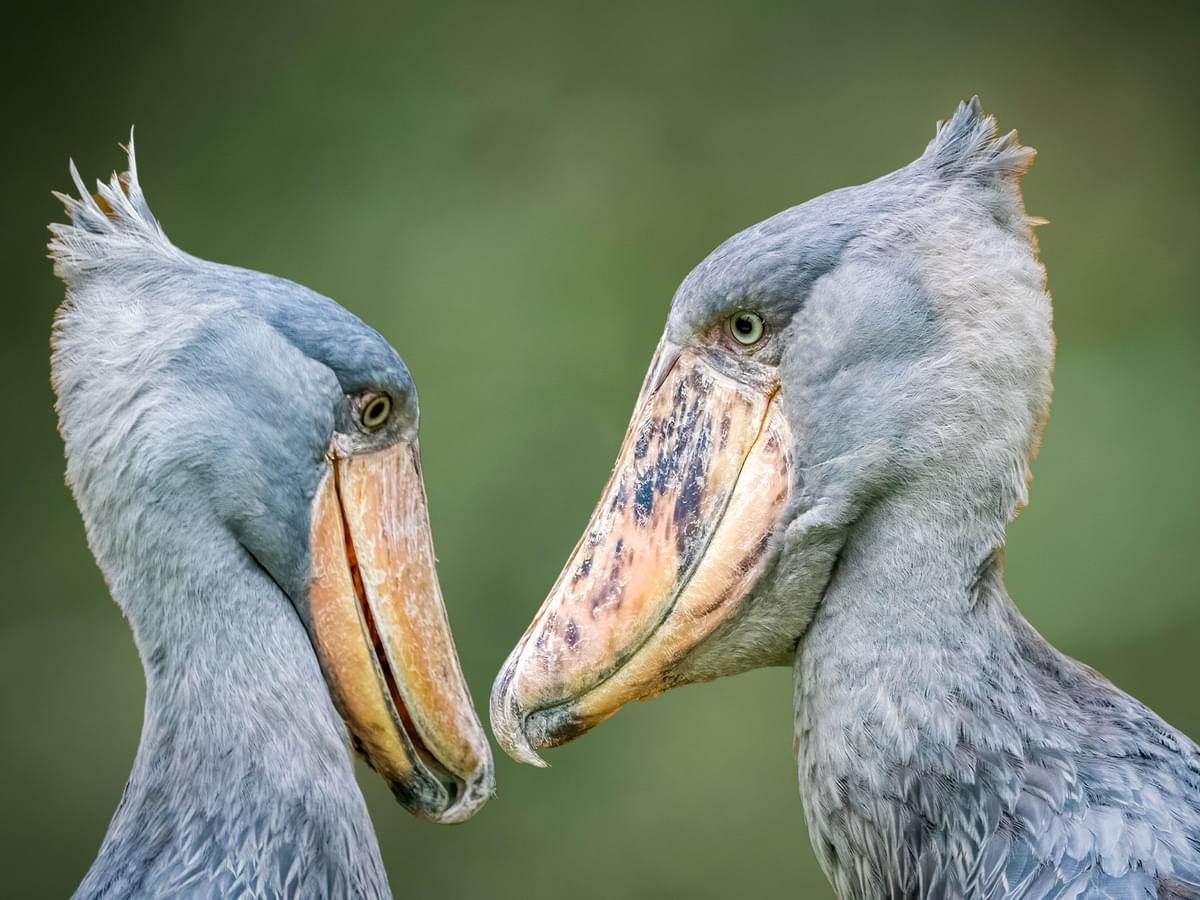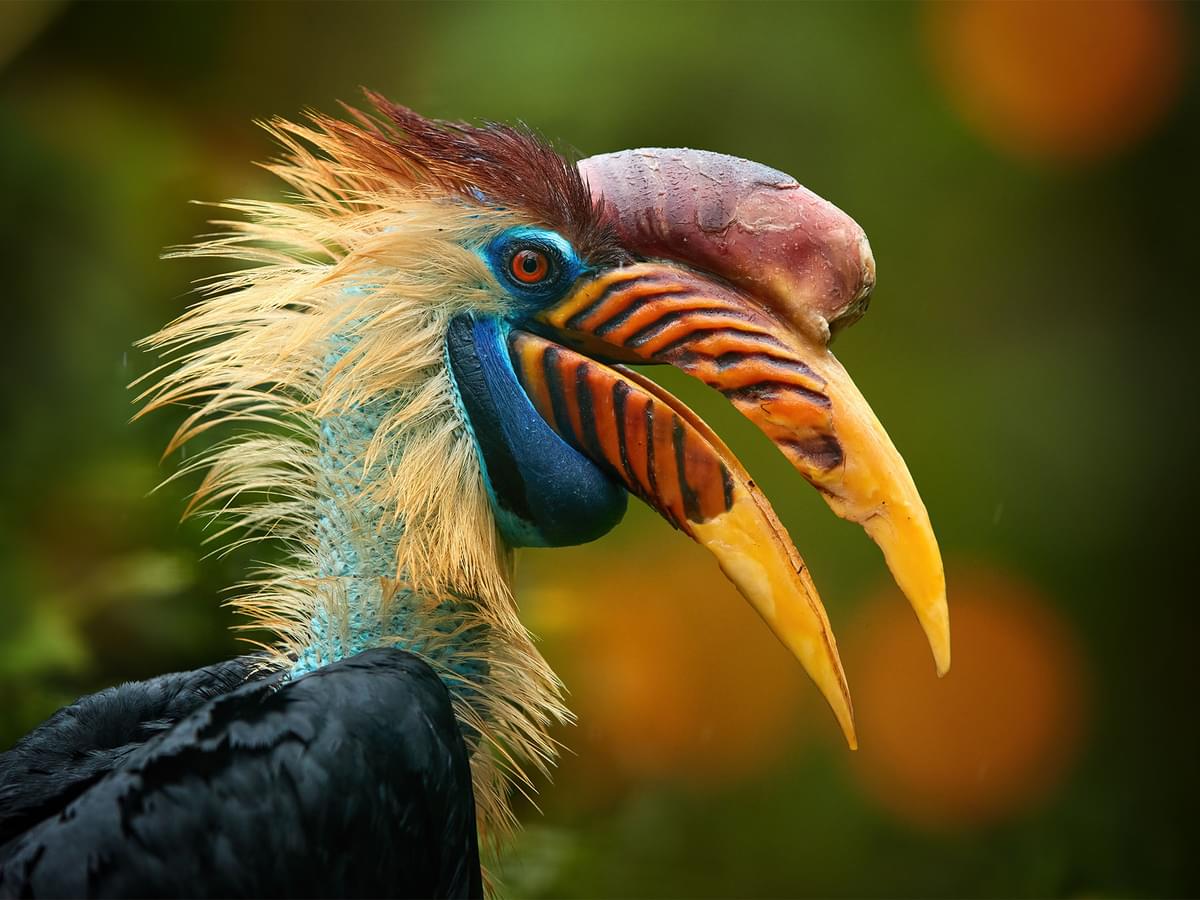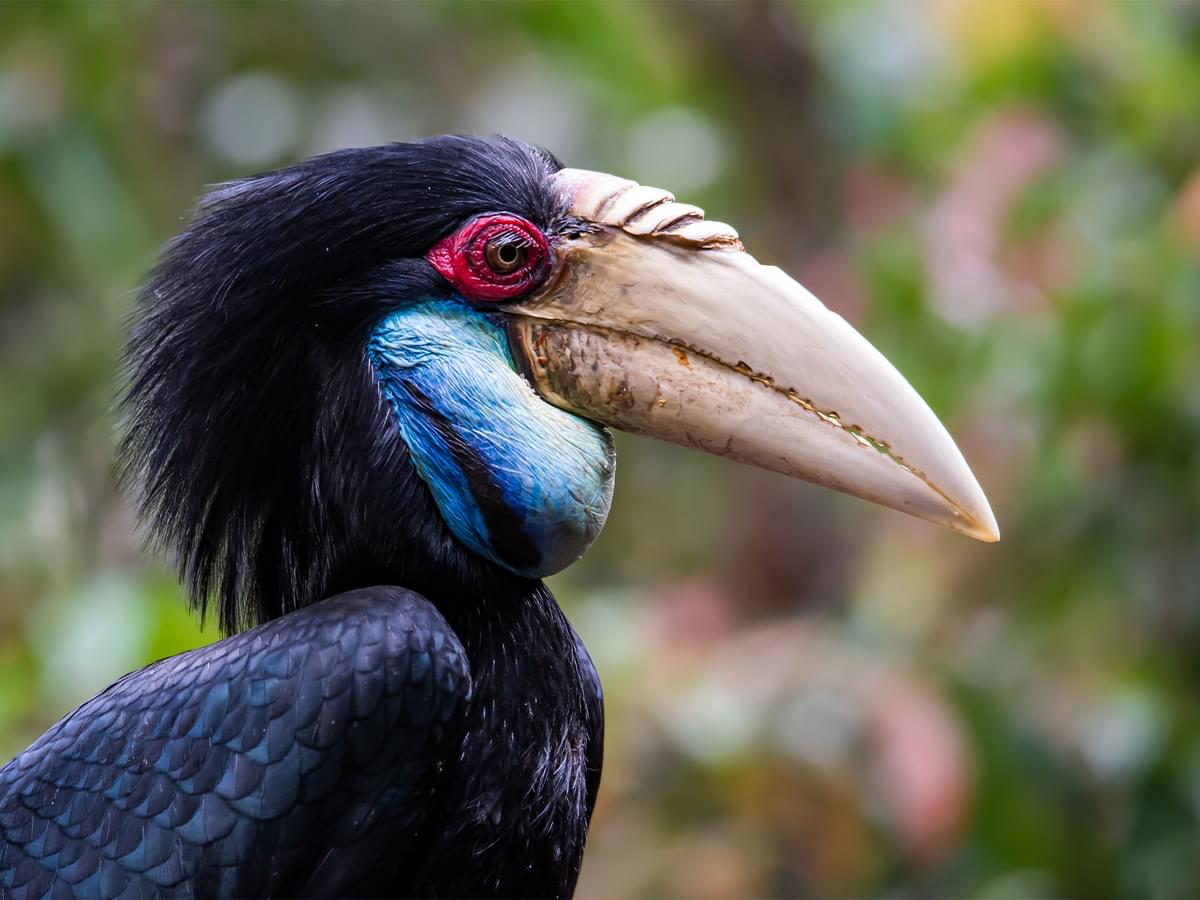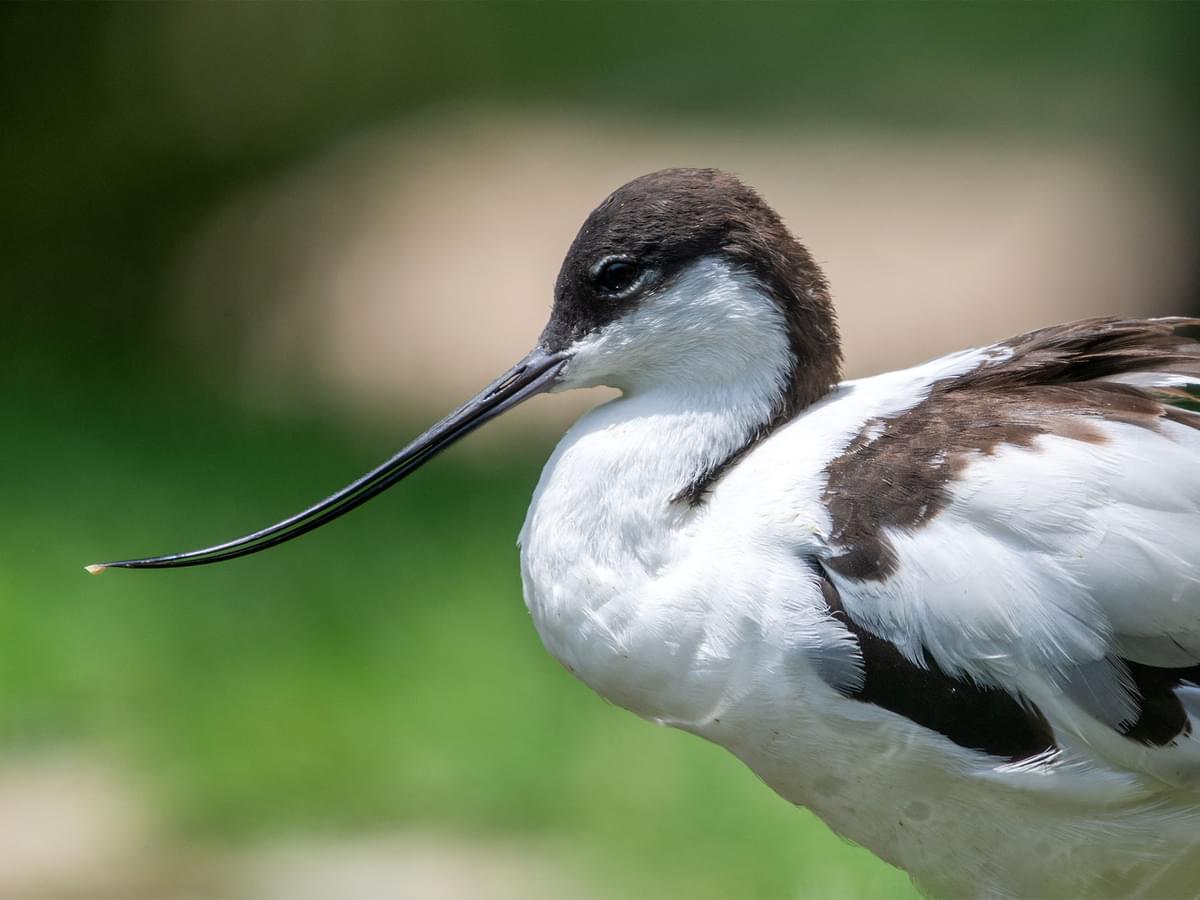Beaks and Skulls

The avian beak and skull are incredibly specialized structures that highlight the diversity of birds and even provide hints at how evolution has shaped life on Earth. Have you ever wondered why bird’s heads and beaks are shaped the way they are?
A bird’s skull is shaped to house its brain, the organ that controls the body’s major functions, and to process information gathered by the eyes and ears, which are also located in the skull. The bill, which is partially an extension of the skull, is used primarily for foraging and feeding.
However, birds also use their bills for many other functions, from hygiene and self-defense to communication and nest-building. While some birds have ‘all-purpose’ beaks, many species have specialized bills adapted for specific tasks and diets.
There’s much more to learn about these fascinating and crucial parts of bird anatomy. Read along as we unpack the form and function of bird beaks and brains.
Beak Shapes and Their Functions
A bird’s beak is one of its most defining features and one of the first things birdwatchers look at when putting a name to a face. Each bill is different, and they vary in size between barely noticeable structures like the beak of the Redpoll and the Long-tailed Tit and oversized bills like those of the Woodstork and the Toucans.
Bird’s bills vary in form just as dramatically as they do in size, but why do birds have such wildly different bill shapes?
Each bird species has evolved a beak that correlates with their diet and lifestyle. It’s obvious that the short, conical bill of a Sparrow would not work very well for spearing fish, and neither would the massive, spear-shaped bill of the Great-blue Heron be much use for picking up tiny seeds.
Adaptations to different food sources have shaped bird beaks into various forms. Let’s take a look at some interesting bill shapes and examples of the birds that have them.
- Cone-shaped bills - Cardinals, Sparrows, Finches
- Needle-shaped bills - Hummingbirds, Sandpipers
- Hooked bills - Parrots, Owls, Falcons
- Spear-shaped bills - Kingfishers, Egrets
- Downcurved/upcurved bills - Curlews, Ibises, Avocets
- Flattened bills - Geese, Spoonbills

The Golden Eagle has a hooked bill

The Curlew has a long downcurved bill
Functional Adaptations
Birds have extremely varied diets, which is one of the major causes of the impressive variety of bill shapes. Continue reading to learn about some important feeding strategies and the bill adaptations that make them possible.
Filter feeders
Filter feeders like Flamingos and Northern Shovelers strain food particles from the water that would be too small and energy-expensive to collect individually. These birds have large bills lined with bristle-like structures known as lamellae. They suck in water through their bills, and the lamellae trap food particles and small animals like a sieve.
Probers
Many birds use their bills to probe for hidden prey in hard-to-reach places. Woodpeckers, for example, can search under tree bark to catch small insects, while shorebirds probe the mud for small worms and crustaceans that burrow beneath the surface.
Raptors
Raptors, like Eagles and Hawks, are the most fearsome carnivores in the bird world, but eating meat would be impossible without their specialized bills. Birds of prey use their hooked beaks to pluck fur and feathers and then tear strips of flesh from their prey.
Nectar feeders
Nectar is an energy-rich food source that is there for the taking - if you have the bill to reach it. Birds like Hummingbirds and Sunbirds use their long, fine bills to reach into tube-shaped flowers and access the sweet treat within.
Seed eaters
Seeds are an abundant food source that many waterfowl, ground birds, and songbirds rely on for part or all of the year. Seed-eating passerines like Finches and Grosbeaks have chunky, conical bills ideal for removing the husk and crushing the shell of tough seeds.

An American Flamingo - Filter feeders like Flamingos strain food particles from the water that would be too small and energy-expensive to collect individually

A Zebra Finch - Seed-eating passerines like Finches and Grosbeaks have chunky, conical bills
Beak Features
Despite the wide variety of colors, shapes, and sizes, all bird beaks consist of the upper jaw (maxilla), lower jaw (mandible), and the keratinized outer layer (Rhamphotheca) that covers them. Let’s take a closer look at some of the most important features of a bird’s beak.
Mandible and Maxilla
The mandible and maxilla are extensions of the bird’s skull, although they are not attached in the same way as our jaws. Instead, the bird’s upper and lower jaw move independently of the skull, which allows birds to open their bill very wide. The mandible and maxilla are composed of fused bones and do not grow throughout the bird’s life.
Rhamphotheca
The rhamphotheca is the collective term for the keratin covering of the mandible and maxilla that forms the visible external beak. It can be further separated into the rhinotheca, which covers the maxilla, and the gnathotheca, which covers the mandible.
The rhamphotheca may be tough or leathery, and it grows continuously throughout the bird’s life. Structurally, this covering is a modified skin layer with an outer layer rich in keratin, the same material that makes up our fingernails.
Nares
Nares are paired holes on the maxilla, usually located near the base of the bill. These are the bird’s nostrils, and most species draw their breath through the nares rather than the mouth.
Tomia
The tomium is the edge of the bird’s mandible used to grip, cut, tear, or crack their food. It may have a simple cutting edge or a distinctive shape, such as the tomial tooth on the Falcon’s bill.

A Peregrine Falcon - Despite the wide variety of colors, shapes, and sizes, all bird beaks consist of the upper jaw, lower jaw and the keratinized outer layer that covers them
The Evolution of Bird Beaks
Origins
Modern birds evolved from the theropods, a group of two-legged dinosaurs that included well-known examples like Velociraptor and Tyrannosaurus. Some of these extinct dinosaurs developed feathers, lost their teeth, and grew beaks before they took to the air.
Evolution is a gradual process, and some early avians would have been well-feathered but flightless and still had mouths filled with heavy teeth.
While the toothless beak of modern birds certainly has weight-saving benefits, some research suggests that in at least some dinosaurs, beaks developed to reduce stress on the front of the skull during feeding rather than as a step toward flight.
Natural Selection and Beaks
Natural selection has changed the shape and size of bird beaks in dramatic and fantastic ways. The basic concept of the process is that helpful mutations improve fitness and are likely to be passed on to future generations, causing a slow change in time toward more specialized or effective anatomy.
So, as birds evolved to live in different environments and feed on various food sources, their bills evolved into shapes and sizes best suited to capture/collect and process that food.
The process of evolution by natural selection was first explained by Charles Darwin, a celebrated British Naturalist. Ironically, his study of the variation in bill shape between Finch species in the Galapagos Islands was one of the major clues for his theory!
Recent Discoveries and Fossil Evidence
Scientists continue to make discoveries about the evolution of birds’ beaks. Just a few years ago (2018), a team of researchers described the beak of a bird called Ichthyornis dispar that had sharp teeth along the length of its upper maxilla but a small keratinized rhamphotheca at the tip of the jaws. This fascinating study showcases the early transition toward the toothless beaks of modern birds over 80 million years ago.

A California Condor - Modern birds evolved from the theropods, a group of two-legged dinosaurs that included well-known examples like Velociraptor and Tyrannosaurus
Skull Structure and Adaptations
Basic Avian Skull Anatomy
The bird skull is a collection of fused bones that support the brain and sensory organs. It has evolved to be strong but lightweight, which is essential for flight. The various bones of the skull are difficult to differentiate because they fuse almost seamlessly. Nevertheless, we can separate the avian skull into the following components:
- Maxilla - Upper jaw
- Mandible - Lower Jaw
- Nasal bone - Located above the Maxilla
- Frontal bone - Top of the skull
- Parietal region - Back of the skull
- Squamosal region - Sides of the skull behind the eyes
Kinetic vs. Akinetic Skulls
Kinetic skulls are those that allow movement between the upper and lower jaw and the braincase, while akinetic skulls, like our own, only allow movement of the lower jaw.
Birds have kinetic skulls, and at least some species can move their maxilla and mandible independently. While this flexibility does allow greater movement between the jaws, it comes at a cost to bite strength.
Adaptations for Hearing and Sight
Hearing and vision are the most highly developed avian senses, and the position of the ears and eyes in the skull plays a big role in the way birds perceive the world.
Many birds have eyes located laterally on the sides of the skull. This allows birds to see most of the world around them, with only a small ‘blind spot’ behind them. Such a wide field of view is great for detecting predators from almost any direction. Predatory birds have eyes located in the front of the skull. This limits their field of view but gives them great binocular vision for spotting prey and judging its distance.
Birds may not have external ears (pinnae) like we do, but they certainly do have ears. Their ears have large external openings on the side of their skull, below and behind their eyes. However, these openings are covered by feathers, so they are difficult to spot except on baby birds and species like Vultures with naked heads.
Ear placement is usually symmetrical, although some Owls have one ear positioned higher than the other, which helps them judge the direction of their prey in complete darkness.

A Boreal Owl - some Owls have one ear positioned higher than the other, which helps them judge the direction of their prey in complete darkness
Summary
Birds have roamed the planet for over 150 million years and evolved into the wonderful diversity we know today. Studying their anatomy has helped scientists understand how they survive in vastly different habitats across the globe and even helped Charles Darwin describe the mechanisms of evolution behind all life on Earth!
If you look closely enough, bird skulls and bills can tell you everything from their diet to their evolutionary ties to dinosaurs. So, next time you’re looking at a Feral Pigeon bobbing its way along a busy city street or a shorebird probing the beach sand for a tasty worm, take a moment to admire its unique bill and skull structure.


